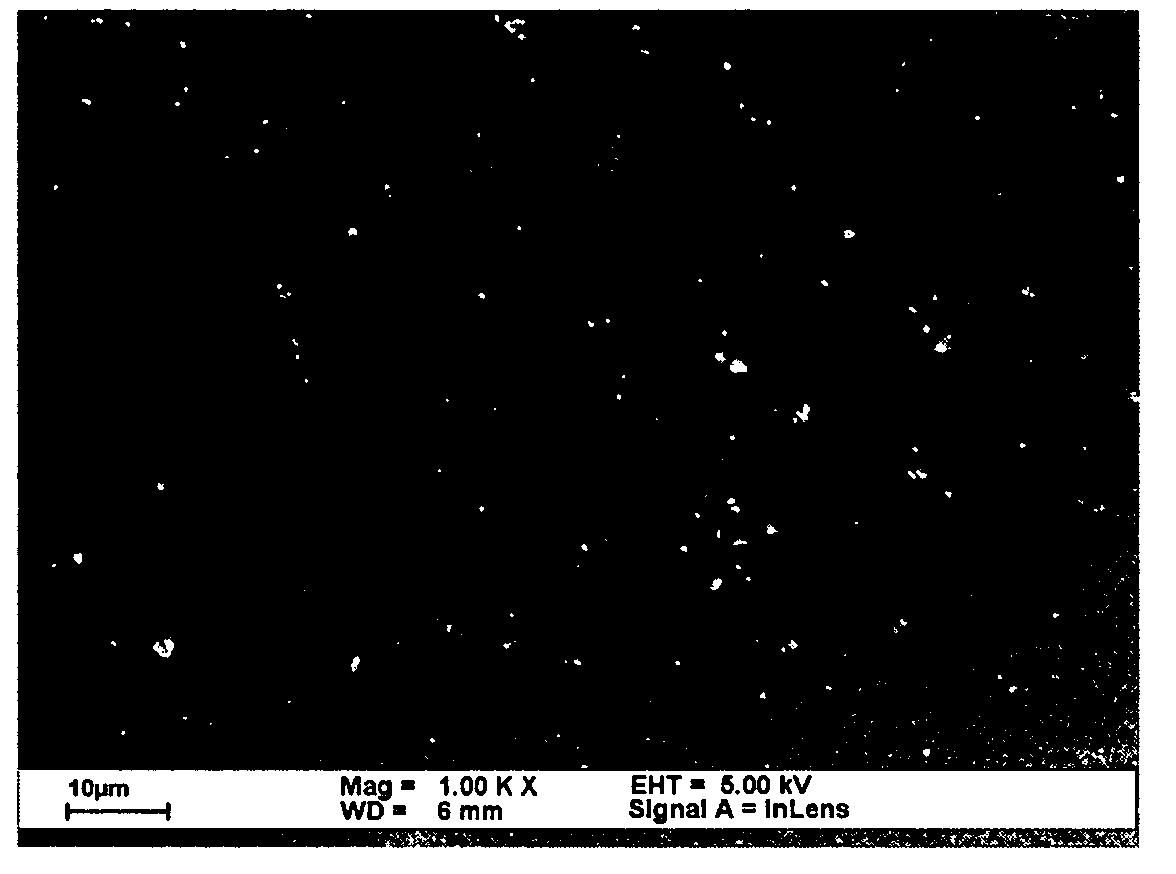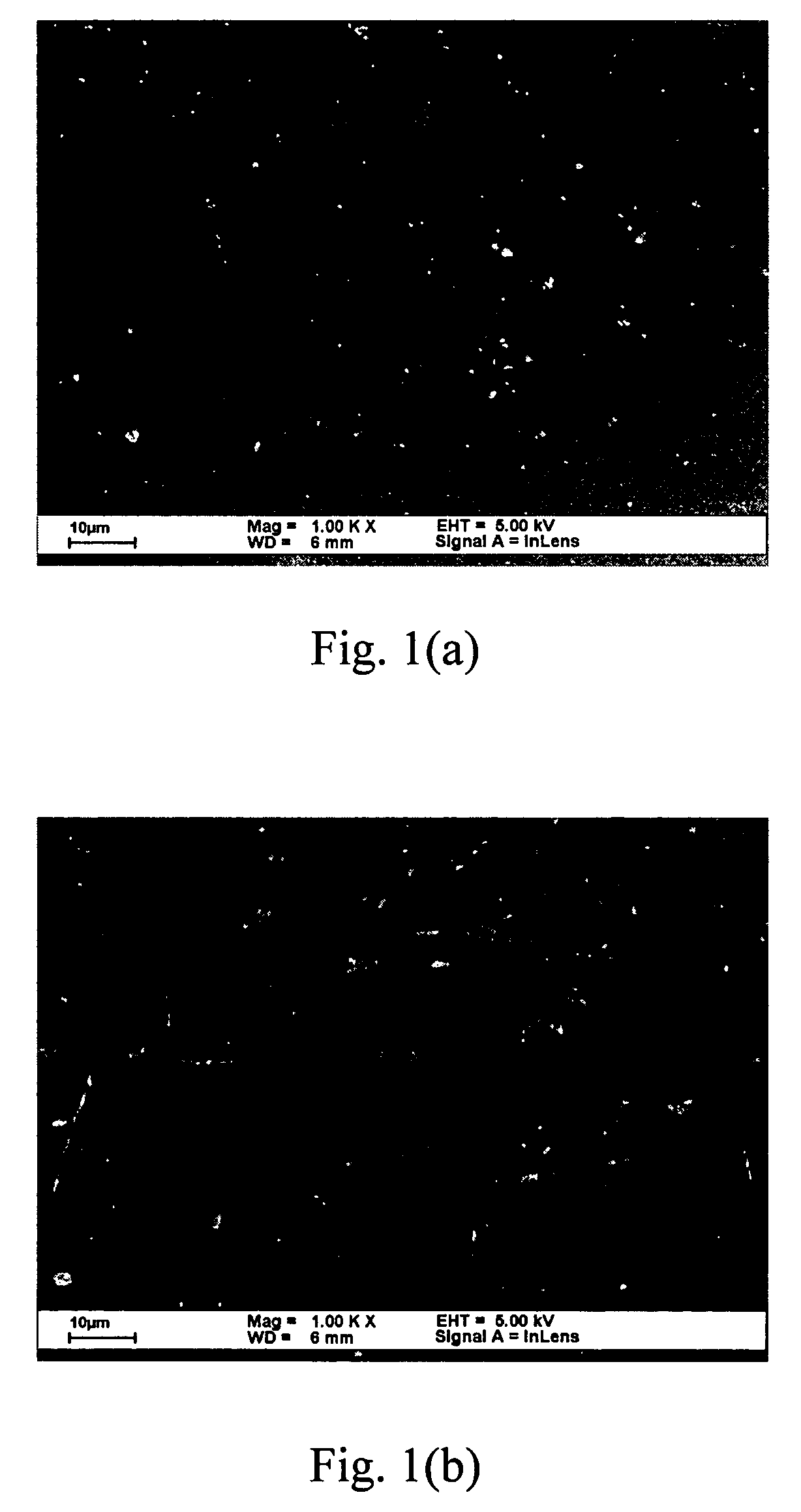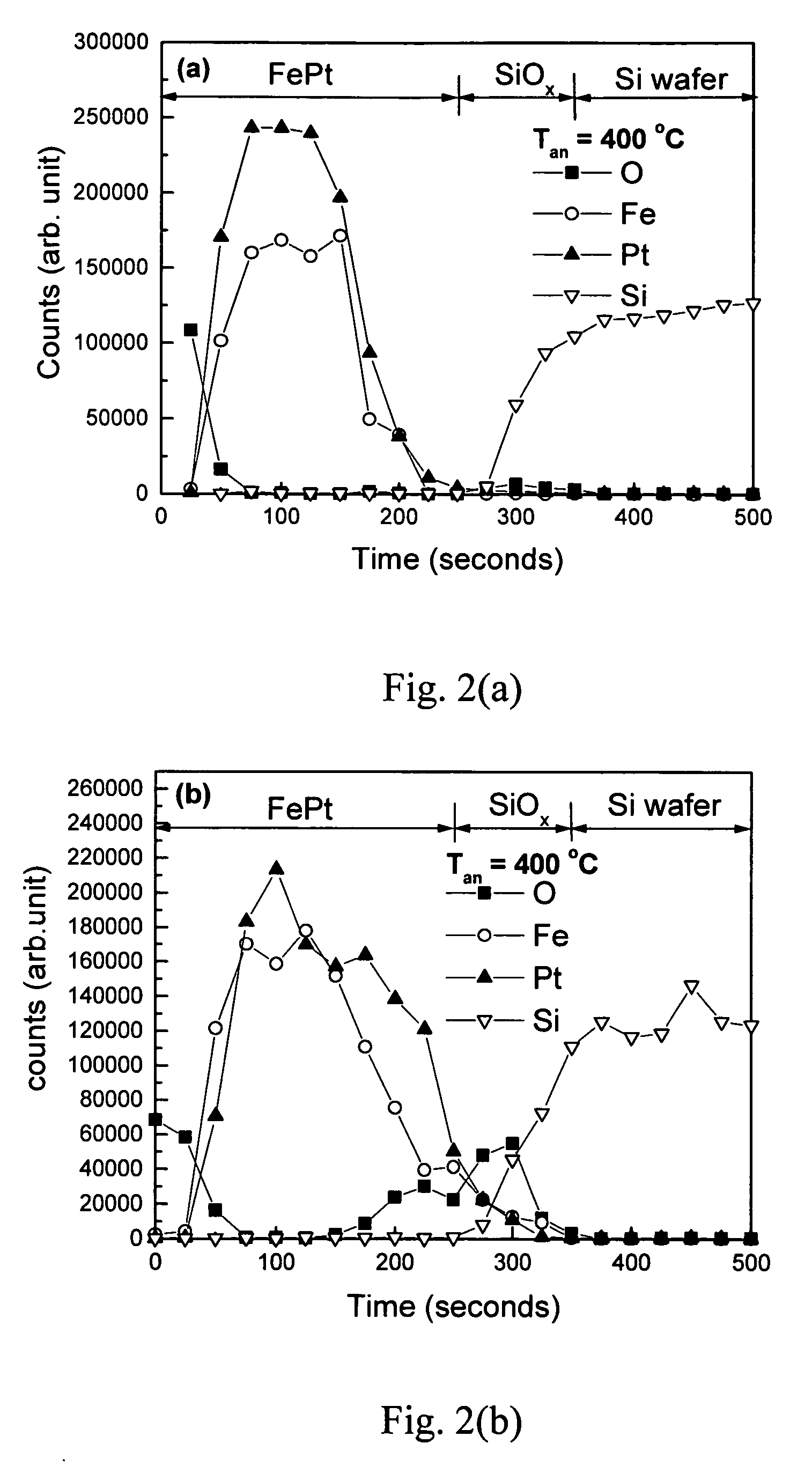Method for fabricating L10 phase alloy film
a technology of alloy film and l10 phase, which is applied in the field of alloy film preparation, can solve the problems of superparamagnetic limit problem, thermal instability of such small magnetic grain, and insufficient coercivity
- Summary
- Abstract
- Description
- Claims
- Application Information
AI Technical Summary
Benefits of technology
Problems solved by technology
Method used
Image
Examples
Embodiment Construction
[0018] The invention is described more specifically with reference to the following embodiments. It is to be noted that the following descriptions of preferred embodiments of this invention are presented herein for the purpose of illustration and description only; it is not intended to be exhaustive or to be limited to the precise form disclosed.
[0019] The present invention provides a method for fabricating an L10 alloy film. The method includes steps of (a) providing a substrate; (b) heating the substrate as a preheated substrate at a first temperature ranged from 100° C. to 600° C. for a time period ranged from 5 minutes to 120 minutes, and then cooling the substrate down to the room temperature in the sputtering chamber; (c) depositing an alloy film on the preheated substrate; and (d) annealing the alloy film at a second temperature ranged from 200° C. to 500° C. to form the L10 alloy film. The substrate is made of a material selected from a group consisting of a silicon wafer, ...
PUM
| Property | Measurement | Unit |
|---|---|---|
| Temperature | aaaaa | aaaaa |
| Temperature | aaaaa | aaaaa |
| Temperature | aaaaa | aaaaa |
Abstract
Description
Claims
Application Information
 Login to View More
Login to View More - R&D
- Intellectual Property
- Life Sciences
- Materials
- Tech Scout
- Unparalleled Data Quality
- Higher Quality Content
- 60% Fewer Hallucinations
Browse by: Latest US Patents, China's latest patents, Technical Efficacy Thesaurus, Application Domain, Technology Topic, Popular Technical Reports.
© 2025 PatSnap. All rights reserved.Legal|Privacy policy|Modern Slavery Act Transparency Statement|Sitemap|About US| Contact US: help@patsnap.com



